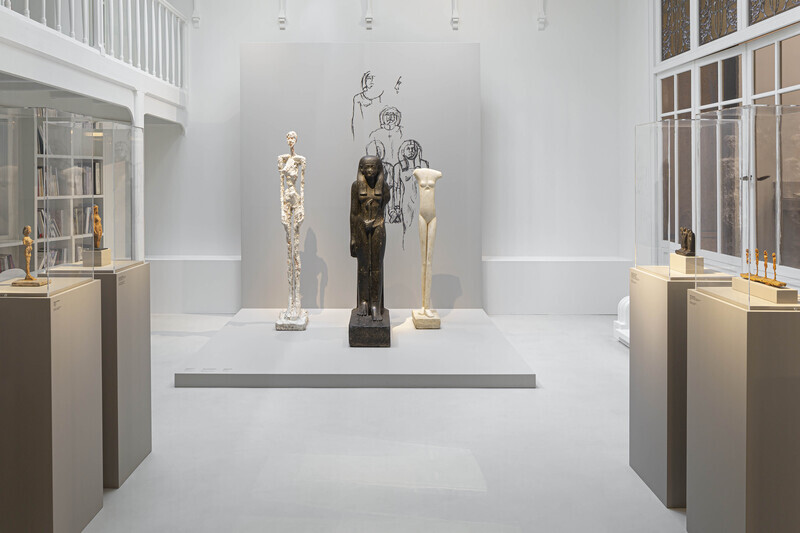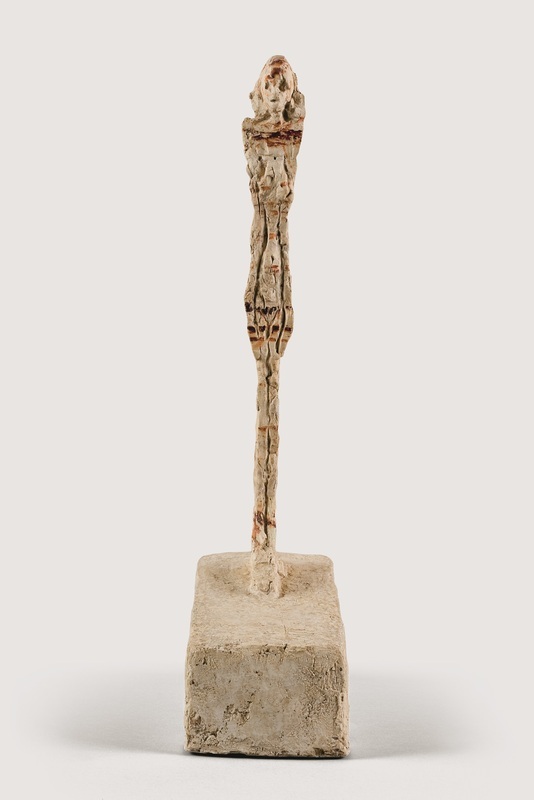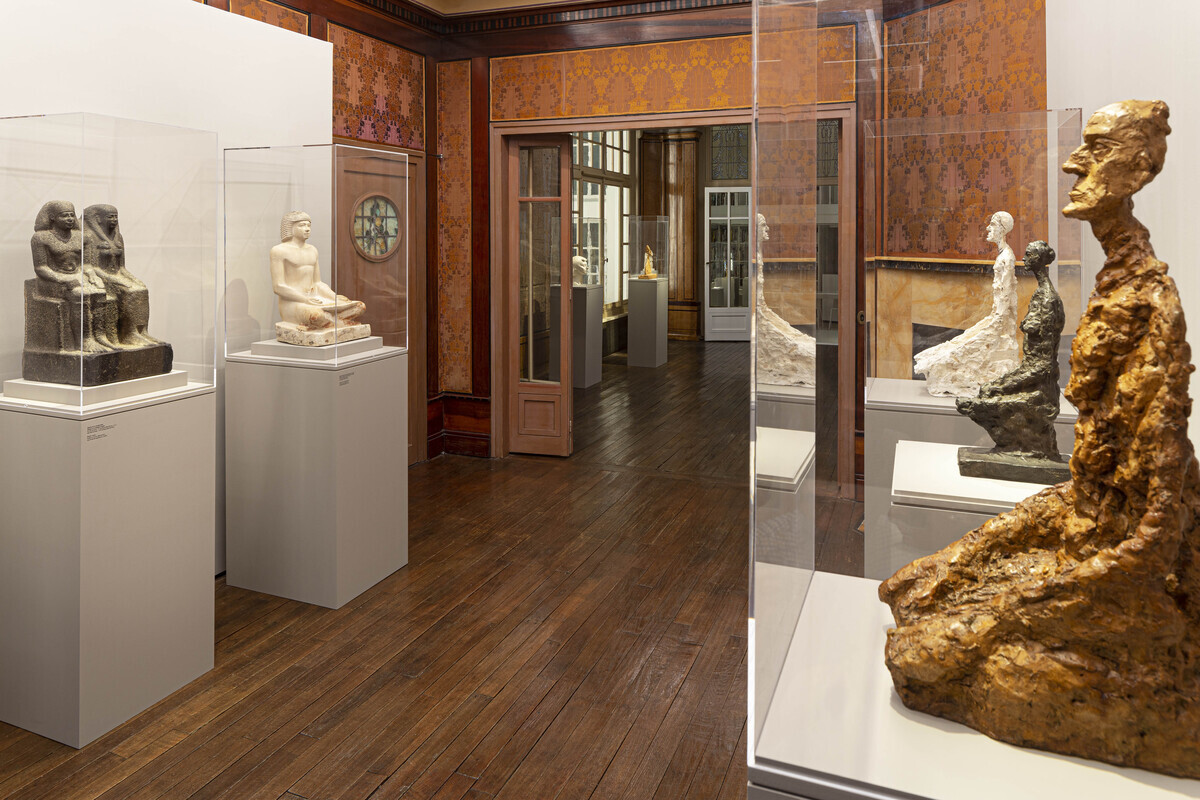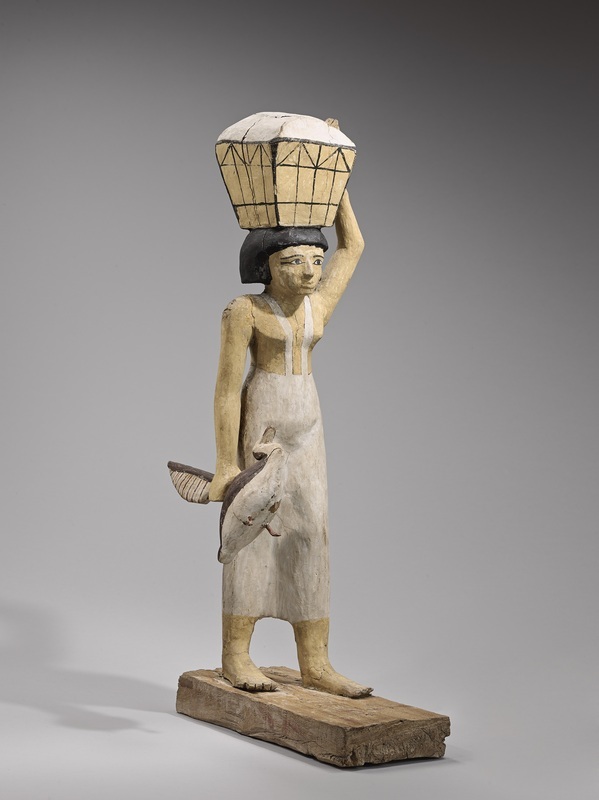Giacometti et l'Egypte Antique
The exhibition
The world that is born
The small but illuminating and ultimately masterful exhibition at the Giacometti Institute recalls that after his break with Surrealism, the artist sought to make likenesses of heads and bodies, capturing something of life and relying on the "magnetic patience" of Egyptian art. "They cut out what was necessary from the whole figure," he notes. And if it's true that "creating a work" translates in Egyptian as "bringing to life," then his Seated Male Bustes may proceed from Old Kingdom scribes, his Walking Women from Middle Kingdom offering bearers, and his Triangle Faces and Knifeblade Profiles from the exaggeratedly long-necked and geometrically distorted representations of Akhenaten in the New Kingdom. "Any one of us looks much more like an Egyptian sculpture than any sculpture ever made," he claimed with certainty.
Extract from the article by Emmanuel Daydé published in the n°98 of the magazine Art Absolument.
The small but illuminating and ultimately masterful exhibition at the Giacometti Institute recalls that after his break with Surrealism, the artist sought to make likenesses of heads and bodies, capturing something of life and relying on the "magnetic patience" of Egyptian art. "They cut out what was necessary from the whole figure," he notes. And if it's true that "creating a work" translates in Egyptian as "bringing to life," then his Seated Male Bustes may proceed from Old Kingdom scribes, his Walking Women from Middle Kingdom offering bearers, and his Triangle Faces and Knifeblade Profiles from the exaggeratedly long-necked and geometrically distorted representations of Akhenaten in the New Kingdom. "Any one of us looks much more like an Egyptian sculpture than any sculpture ever made," he claimed with certainty.
Extract from the article by Emmanuel Daydé published in the n°98 of the magazine Art Absolument.
When
22/06/2021 - 10/10/2021



